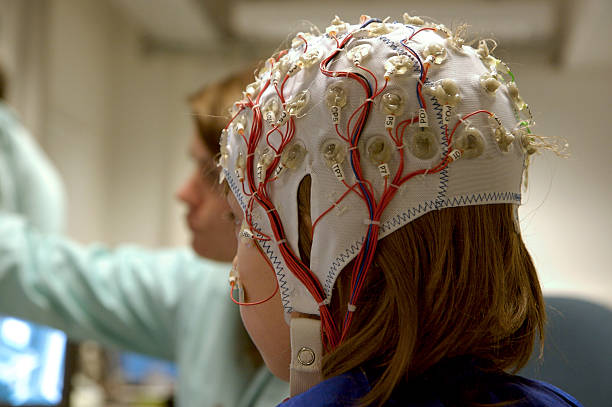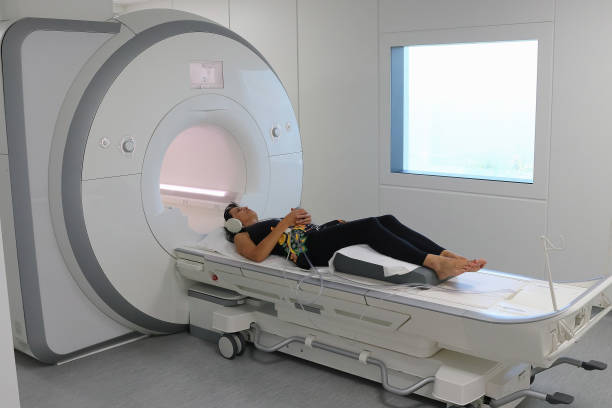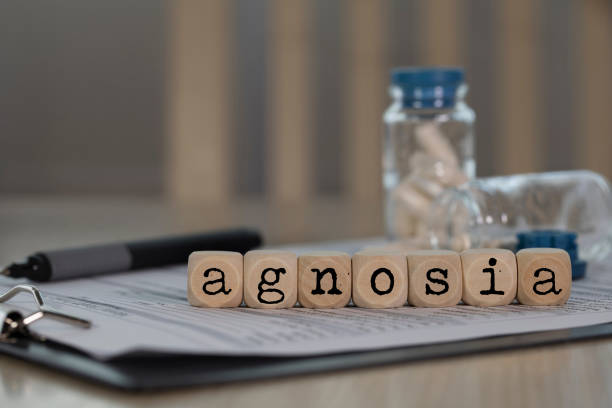The human brain is made up of hundreds of thousands of nerve cells, known as neurons. These neurons send continuous electrical signals through the nerves to all parts of the body. However, the normal activity of the nerve cell is disrupted when the neuron suddenly sends an excessive or abnormal electrical signal. You can easily describe epilepsy as changes in the brain’s electrical activity. These changes can cause dramatic, noticeable symptoms or, in other cases, no symptoms at all.
Structural process
According to the structure of the neurons in the human body, they are divided into two parts – body and process. Processes are further divided into axons and dendrites.
Neurons form synapses with each other through axons/dendrites or bodies. An electrical signal is generated from the neuron cell and travels along the axon. The small space at the end of the axon, i.e. between the axon of the first neuron and the dendrite of the next neuron, is called the synapse. Neurotransmitters are released at the ends of axons, chemicals that stimulate receptors on the dendrites of the next neuron to cross the synapse, causing the neuron to fire and generate an electrical signal that propagates.
In epilepsy, neurons suddenly produce excessive or abnormal electrical signals.
Types of epilepsy
The two main types are now called focal seizures and generalized seizures.
Focus seizures
Focal seizures are sometimes called partial seizures. They occur in a region of the brain.
1. Generalized focal seizures: These seizures originate in a specific part of the brain and affect only one body part or function. During this seizure, the person remains alert and aware. They may experience things like muscle twitching or unusual sensations, such as tingling or a sudden smell.
2. Complex focal seizures: Like typical focal seizures, they start in one part of the brain. However, they often lead to changes in consciousness or awareness. Individuals with complex focal seizures may exhibit unusual behaviors such as lip smacking, picking at their clothes, or wandering around aimlessly.
Generalized seizures
These attacks start on both sides of the brain at the same time. More common types of generalized seizures include tonic-clonic, absence, and atonic.
- Tonic-clonic: These are also known as grand mal seizures. “Tonic” refers to muscle strengthening. “Clonic” refers to jerking of the arms and legs during a seizure. You may lose consciousness during these seizures, which may last several minutes.
- Absence: Also called petit-mal seizures, which last only a few seconds. They may blink at you repeatedly or stare off into space. Others may mistake you for dreaming.
- Atonic: During these seizures, also known as collapse attacks, your muscles suddenly fail. Your head may shake or your entire body may fall to the ground. Aton attacks are short, lasting about 15 seconds.
- Myoclonic convulsions: In this type of convulsions, body parts such as arms, legs, and any part of the body suddenly jerk. A sudden twitch of a group of muscles can cause an arm or leg to suddenly start to flail.
Unexplained seizures
Sometimes no one sees the onset of a seizure. For example, someone may wake up in the middle of the night to see if their partner is having a seizure. These are called undiagnosed seizures. They are not classified due to insufficient information about how they started.
Other types of seizures:
- Infantile seizures: These seizures occur in children and involve sudden, brief muscle contractions or convulsions. These often occur in clusters and can be quite worrisome for parents.
- Febrile convulsions: Febrile convulsions are triggered by a high fever, usually in young children between 6 months and 5 years. These are usually brief and do not usually lead to epilepsy.
- Non-epileptic seizures: These seizures look like epilepsy but are not caused by abnormal electrical activity in the brain. They can be caused by psychological factors or other underlying medical conditions.
Symptoms
Symptoms of a severe seizure include violent shaking and loss of control of the face and hands, falling, saliva coming out of the mouth, fixed eyelids, etc. This is a seizure or epilepsy. However, mild seizures can also be a sign of a significant medical problem, so they should be recognized. Because some seizures can be caused by an injury or a symptom of an underlying medical condition, it’s important to get treatment if you experience them.

You may experience both focal and generalized seizures at the same time, or one may occur before the other. Symptoms can last from a few seconds to 15 minutes per episode. Some common symptoms of seizures may include:
- Loss of consciousness: Many seizures involve a loss of consciousness, where the person becomes unaware of their surroundings.
- Muscle twitching or jerking: Rhythmic or jerky movements of the arms, legs, or other parts of the body may occur during some seizures, especially tonic-clonic (grand mal) and myoclonic seizures.
- Muscle stiffness: In some seizures, such as tonic seizures, muscles suddenly stiffen.
- Blank staring or absence: Absence (minor) seizures may cause a person to briefly stare into space, seeming unresponsive.
- Automaticity: These are repetitive, purposeless actions that may occur during complex focal seizures. Examples include pursed lips, picking at clothing, or repetitive hand movements.
- Sensory changes: Some people experience sensory symptoms during a seizure, such as tingling sensations, strange tastes or smells, or visual disturbances.
- Loss of muscle tone: In atonic seizures, there is a sudden loss of muscle tone, causing a person to collapse or fall.
- Altered consciousness: During complex focal seizures, individuals may have altered consciousness or awareness. They may feel confused, dreamy, or disconnected from reality.
- Vocalization: Some seizures may involve the vocal cords, such as making unusual noises or gibberish.
- Involuntary movements: In addition to muscle twitching, some seizures may cause involuntary movements such as shaking or shaking.
- Emotional changes: Seizures can sometimes cause emotional changes, including fear, anxiety, or sudden laughter or crying.
- Loss of bladder or bowel control: This can occur during some seizures, especially tonic-clonic seizures.
Sometimes the symptoms preceding the attack may be:
- Feeling sick to your stomach
- dizziness
- Vision changes
- Jerky arm and leg movements that can cause you to drop things
- Beyond the senses of the body
- headache
Signs that a seizure is in progress are:
- Loss of consciousness, followed by confusion
- Those whose muscle spasms are uncontrollable
- Slurping or ironing on the face
- Pawn
- You have a strange taste in your mouth
- Teeth are grinding
- Biting his tongue
- There are sudden, rapid eye movements
- They make unusual noises, such as humming
- Loss of control of bladder or bowel function
- Sudden mood swings
Causes of seizures
Seizures can be caused by a variety of medical conditions. Anything that affects the body can disrupt the brain and lead to seizures. Some examples include:
- Alcohol withdrawal
- Brain infections, such as meningitis
- Brain injury during childbirth
- Brain damage present at birth
- suppression
- Drug abuse
- Drug withdrawal
- Electrolyte imbalance
- electric shock
- epilepsy
- Very high blood pressure
- fever
- head injury
- Kidney or liver failure
- Low blood glucose
- stroke
- brain abscess
- Vascular abnormalities in the brain
Epileptic seizures can run in families. Tell your doctor if you or someone in your family has a seizure. In some cases, especially in young children, the cause of seizures may be unknown.
Effects of seizures/ Epilepsy
If you don’t get treatment for seizures, their symptoms can get worse and gradually become more chronic. Very long seizures can lead to coma or death.
Seizures can also be caused by trauma, such as falls or body blows. It is important to wear a medical identification bracelet that tells emergency personnel that you have epilepsy.
Diagnosis of Seizure/Epilepsy
Your doctor may recommend certain tests to accurately diagnose seizures and ensure the effectiveness of their recommended treatment.
Your doctor will consider your complete medical history and the events that led to the seizure. For example, conditions such as migraine headaches, sleep disorders and extreme stress can cause seizure-like symptoms.
Lab tests can help your doctor rule out other conditions that may be causing seizure-like activity.
Tests may include:

Blood tests to check for electrolyte imbalances, infections, genetic conditions or blood sugar levels.
Toxicology tests to test for drugs, poisons, or toxic substances
An electroencephalogram (EEG) can help your doctor diagnose seizures. This test measures your brain waves. Examining the brain waves during a seizure can help your doctor diagnose the type of seizure. In an EEG, electrodes are attached to the scalp to record the brain’s electrical activity which shows up as wavy lines on an EEG recording, thus revealing a pattern that helps predict future seizures. It also helps rule out conditions that mimic epilepsy.

Imaging scans such as CT or MRI scans can help by providing a clearer picture of the brain. These tests allow your doctor to look for abnormalities such as blocked blood flow or tumors.

Neurological examination: The doctor tests your motor skills, behavior, and mental function to identify brain and nervous system problems, if any
Single-photon emission computerized tomography
SPECT helps create a detailed 3D map of brain blood flow activity during a seizure.
Treatment of Seizure/Epilepsy
Treatment for seizures depends on the cause. By treating the cause of the seizure, you may be able to prevent future seizures. Treatments for seizures due to epilepsy include:
- Medications: Your doctor will actively search for the most suitable anticonvulsant medications for you, considering factors like seizure frequency, your age and overall health, and any potential side effects. They will carefully review your medical history to ensure the chosen antiepileptic drugs won’t interact with any medications you’re already taking. This way, you can find the most effective combination with minimal disruption to your well-being.
- Surgery: Surgeons identify the areas from which seizures occur and remove them to relieve brain abnormalities. This method works best for people who suffer from seizures originating from the same brain location.
- Nerve Stimulation: Beyond medications, various nerve stimulation therapies are emerging as promising alternative treatments for seizures. One notable example is the vagus nerve stimulator, a small device implanted under the chest that sends electrical pulses to the vagus nerve. These pulses travel to the brain and help regulate its activity, potentially reducing seizure frequency and severity.
- Reactive Neurostimulation: Imagine a brain guard against seizures. That’s what reactive neurostimulation offers. This tiny device, implanted within or on the brain, acts like a vigilant sentry. It continuously monitors brain activity, and when it detects the telltale signs of a seizure brewing, it delivers a precise burst of electrical stimulation directly to the source. This targeted intervention can help stop the seizure in its tracks, potentially preventing significant symptoms..
- Deep brain stimulation: Electrodes implanted in the brain generate electrical impulses to control normal brain activity. The electrodes connect to a neurostimulator, implanted under the skin like a pacemaker, which controls the intensity of deep brain stimulation.
- Diet: The ketogenic diet, high in fat and low in carbs, has proven itself as a strong contender in seizure control, even surpassing options like the low glycemic index diet or modified Atkins diet. Treatment initiation for individuals with isolated seizure episodes may be delayed.
With regular treatment, you can reduce or stop seizure symptoms.
Helping Someone with Seizure/Epilepsy
- Clean the area around the person having a seizure to avoid possible injury.
- If the patient is wearing glasses, remove them and place a pillow under the head.
- If the patient is wearing a tie, loosen the tie to allow for easy breathing.
- Lay the patient on one side and keep the airway open.
- If the seizure continues for more than five minutes, an ambulance should be called immediately and taken to the hospital.
- The identity card of the epileptic should be sought.
- Contact the patient’s friends or relatives to take the patient home.
Stay with the person and call the Medical Emergency Contact in your country as soon as possible if any of the following apply:
- The attack lasted more than three minutes.
- They do not wake up after a seizure
- They experience frequent seizures.
- An attack occurs in a pregnant person.
- A seizure occurs in someone who has never had a seizure.
It is important to remain calm. There’s no stopping an attack once it starts, you can help the victim with the following recommendations :
- As soon as you start to notice the symptoms of a seizure, monitor the time. Most seizures last between one and two minutes but If a person has epilepsy and the seizure lasts longer than three minutes, call 911.
- If the person having a seizure is standing, you can prevent them from falling or injuring themselves by holding them in your arms or gently moving them to the floor.
- Make sure they are away from furniture or other objects that could fall on them or cause injury.
- If the person having a seizure is on the ground, try placing them on their side so that drool or vomit comes out of their mouth instead of their windpipe.
- Do not put anything in the person’s mouth.
- Don’t try to block them while they are attacking.
After the arrest
Once the attack is over, here’s what to do:
- Check the person for injuries.
- If you cannot turn the person during the seizure, do so after the seizure continues.
- If they have difficulty breathing and loosen tight clothing around their neck and wrists, use your finger to clear their mouth or vomit.
- Stay with them until they are fully awake and alert.
- Provide them with a safe, comfortable place to rest.
- Do not offer them anything to eat or drink until they are fully conscious and aware of their surroundings.
- Ask them where they are, who they are, and what day it is. It may take a few minutes for you to fully wake up and answer your questions.
Tips for living with epilepsy
- Living with epilepsy can be challenging. But with the right support it is possible to live a full and healthy life.
- Educate friends and family
- Teach your friends and family more about epilepsy and how to take care of yourself during seizures.
- This includes taking steps to reduce the risk of injury, such as moving your head, loosening tight clothing, and rolling onto your side if you vomit.
- Find ways to maintain your current lifestyle
- Continue with your normal activities if possible and find ways to fight epilepsy to maintain your lifestyle. For example, if your seizures no longer allow you to drive, you may choose to move to an area that is walkable or has good public transportation or rideshare services so you can still get around.
Other tips
- Find a good doctor who makes you feel comfortable.
- Try relaxation techniques such as yoga, meditation, tai chi or deep breathing.
- Find an epilepsy support group. You can find a local one by searching online or asking your doctor for a recommendation.
Tips for caring for someone with epilepsy
If you live with someone who has epilepsy, there are things you can do to help that person:
- Learn about their status.
- Make a list of their medications, medical appointments, and other important medical information.
- Talk to the person about their situation and what role you want them to play in helping you.
If you need help, contact your doctor
Prevention of Epilepsy/Seizure
Though complete prevention isn’t always possible. However, maintaining a healthy lifestyle may give you the best chance of reducing your risk. You can do the following:
- Take rest.
- Eat a healthy diet and stay well hydrated.
- Exercise regularly.
- Engage in stress reduction techniques.
- Avoid taking illegal drugs.
If you take medications for epilepsy or other medical conditions, take them as directed by your doctor.
